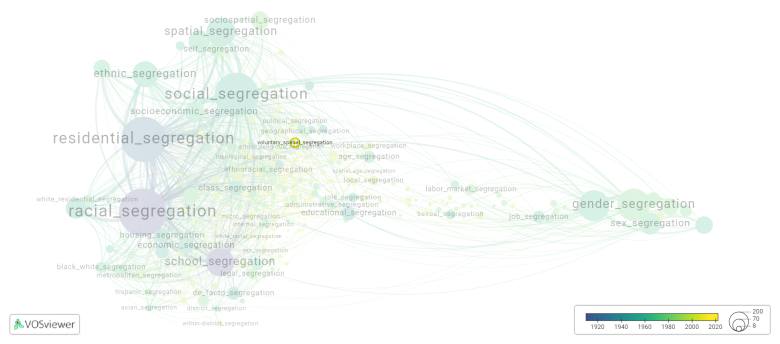Voluntary spatial segregation: Difference between revisions
(Creating page) |
(Creating page) |
||
| Line 10: | Line 10: | ||
Efforts to address voluntary spatial segregation may include initiatives to promote diversity and inclusion, such as affordable housing policies, community programs, and anti-discrimination measures. By fostering greater interaction and understanding among diverse groups, voluntary spatial segregation can be reduced and communities can become more inclusive and united. | Efforts to address voluntary spatial segregation may include initiatives to promote diversity and inclusion, such as affordable housing policies, community programs, and anti-discrimination measures. By fostering greater interaction and understanding among diverse groups, voluntary spatial segregation can be reduced and communities can become more inclusive and united. | ||
==See also== | ==See also== | ||
==Related segregation forms== | |||
Voluntary spatial segregation is frequently discussed in the literature with the following segregation forms: | |||
[[social segregation]], [[spatial segregation]], [[self segregation]] | |||
[[File:voluntary_spatial_segregation.png|780x780px]] | |||
For the complete network of associated segregation forms, see: | |||
year of publication https://tinyurl.com/2235lkhw | |||
Louvain clusters https://tinyurl.com/2d8wg5n3 | |||
betweenness centrality https://tinyurl.com/223udk5r | |||
disciplines where segregation forms first appeared https://tinyurl.com/244d8unz | |||
==References== | ==References== | ||
==Notes== | ==Notes== | ||
Revision as of 14:39, 27 September 2024
Date and country of first publication[1]
2015
Indonesia
Definition
Voluntary spatial segregation refers to the phenomenon where individuals or groups choose to live or socialize primarily with others who are similar to them in terms of race, ethnicity, socioeconomic status, or other demographic characteristics. This can result in the creation of homogenous neighborhoods, schools, or social circles, where diversity is limited.
This type of segregation is not enforced by law or policy, but rather occurs as a result of individual choices and preferences. It can contribute to the perpetuation of inequality and perpetuate social divides, as individuals may miss out on opportunities for cross-cultural understanding and collaboration.
Efforts to address voluntary spatial segregation may include initiatives to promote diversity and inclusion, such as affordable housing policies, community programs, and anti-discrimination measures. By fostering greater interaction and understanding among diverse groups, voluntary spatial segregation can be reduced and communities can become more inclusive and united.
See also
Related segregation forms
Voluntary spatial segregation is frequently discussed in the literature with the following segregation forms:
social segregation, spatial segregation, self segregation

For the complete network of associated segregation forms, see:
year of publication https://tinyurl.com/2235lkhw
Louvain clusters https://tinyurl.com/2d8wg5n3
betweenness centrality https://tinyurl.com/223udk5r
disciplines where segregation forms first appeared https://tinyurl.com/244d8unz
References
Notes
- ↑ Date and country of first publication as informed by the Scopus database (December 2023).
At its current state, this definition has been generated by a Large Language Model (LLM) so far without review by an independent researcher or a member of the curating team of segregation experts that keep the Segregation Wiki online. While we strive for accuracy, we cannot guarantee its reliability, completeness and timeliness. Please use this content with caution and verify information as needed. Also, feel free to improve on the definition as you see fit, including the use of references and other informational resources. We value your input in enhancing the quality and accuracy of the definitions of segregation forms collectively offered in the Segregation Wiki ©.
Voluntary spatial segregation appears in the following literature
Marcuse P. (1997). The enclave, the citadel, and the ghetto: What has changed in the post fordist U.S. city. Urban Affairs Review, 33(2), 228-264. SAGE Publications Inc..https://doi.org/10.1177/107808749703300206
Winarso H., Hudalah D., Firman T. (2015). Peri urban transformation in the Jakarta metropolitan area. Habitat International, 49(), 221-229. Elsevier Ltd.https://doi.org/10.1016/j.habitatint.2015.05.024
